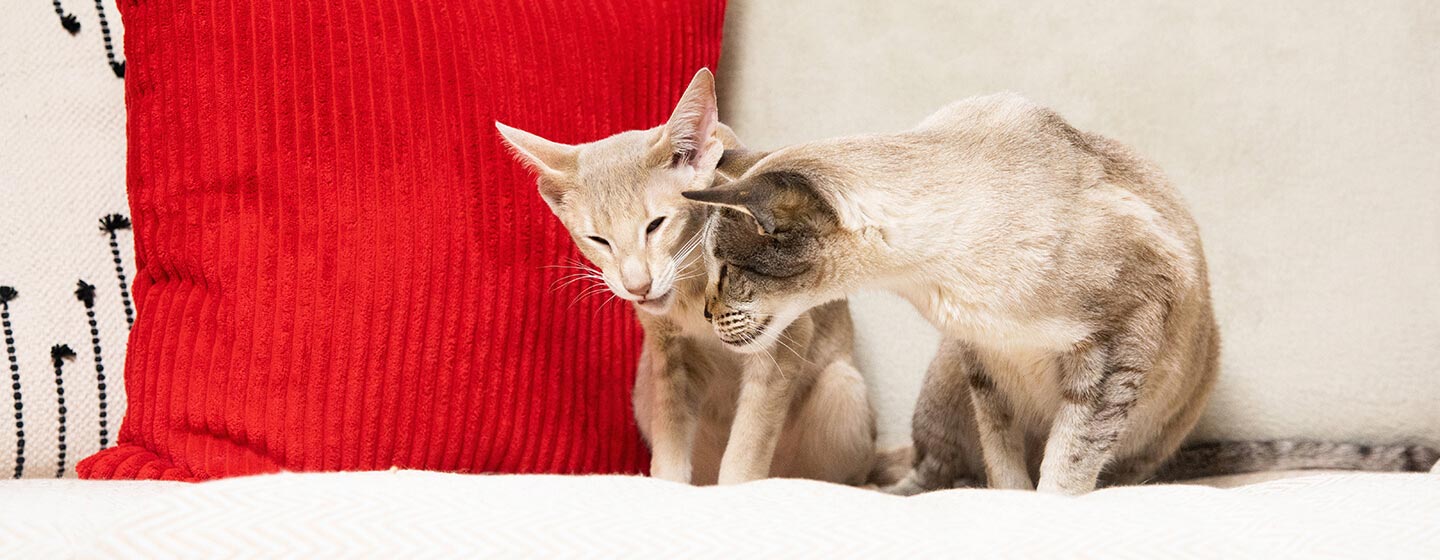
A cat’s enhanced senses are wonderfully intricate mechanisms. Find out fascinating facts about the kitten’s five senses and whether there is a sixth one as some proud cat owners claim.
From playing the piano to performing full backflips and gravity-defying tree climbing, cats are constantly surprising us with their impressive abilities. But behind these amazing skills are the finely tuned cat senses, honed over thousands of years of being on the prowl.
Our cats have whiskers that work like antennas, ears that act as satellite dishes and a dual scent mechanism that beats even the most nose-sensitive canines.
Cat sense of smell
A cat’s nose possesses 40 times more odor-sensitive cells than humans. Some researchers even rank a cat’s sense of smell above that of our trusted canines. From bonding to hunting, mating to exploring their surroundings, cats use their highly trained sense of smell to navigate their environment and pick up vital information.
This powerful sense of smell is one of the best hunting tools a cat could wish for, identifying prey long before it suspects any danger. The same goes for cat food well-hidden at the back of the kitchen cupboard.
Cats have a dual scent mechanism. They have olfactory receptors which they use to detect aromas in the air. But they also have the vomeronasal organ located in the roof of their mouth which helps them identifies pheromone signatures for social, mating, and territorial information.
Cat sense of sight
A cat’s wide field of vision and movement detect abilities make them such proficient hunters at night. In the dark, cats can see ultraviolet light that we humans can’t even detect. Given their nocturnal nature and hunting patterns, they can’t see very well during the day and they struggle with a type of near-sightedness.
Despite their heightened sense of sight, it turns out cats have a blind spot located right under their chin.
Cat sense of hearing
A small rustle in the leaves on the ground might go unnoticed by humans, but your kitten will quickly perk up their ears and investigate further. A cat’s cone-shaped ears work like a feline satellite dish helping them hear a wide range of frequencies. In fact, they can hear more frequencies than most mammals, including us humans.
The shape of a cat’s outer ear accomplishes two tasks in one: it helps amplify the sound as it’s being passed on to the middle and inner ear, and it detects exactly where the noise is coming from. Hearing is particularly useful tool for hunting and evading danger.
A cat hearing myth debunked
Some cat lovers believe that kittens with white fur and blue eyes are prone to deafness. Although there is some evidence that some white cats are more prone to genetic deafness, it’s not true of all cats with these looks.
Cat sense of taste
A cat’s sense of taste is weaker compared to humans. This means that they are not able to taste anything sweet. However, many believe that their heightened sense of smell makes up for their poor taste buds.
Cats don’t like anything bitter like coffee and lemons as they interpret bitter signals to mean dangerous or poisoning food. It’s the same reason why bitter liquids and sprays are sometimes used to dissuade cats from biting and chewing furniture or wounds.
A unique taste sense
Experts believe that cats lack the sweet gene that allows them to taste sweet food, and that they might be the only mammal in this situation. Although some owners can swear their cat has a sweet tooth, it’s quite possible that the fat content is what makes these sweet foods attractive to them, not the sweetness itself.
Cat sense of touch
The cat’s sophisticated sense of touch is always there to support and enhance their vision. Their whiskers act as touch receptors that allow them to measure distances, navigate tight spaces, and gracefully leap on thin ledges.
Touch receptors are also present on their nose and paws. A cat’s fur itself contributes to a heightened sense of touch as it’s always picking up sensory information. It’s why your cat responds by purring every time you stroke it.
A surprising fact about a cat’s sense of touch
You probably think of your cat’s whiskers as a facial feature. It turns out whiskers are also present on cat’s front legs. They come from a time when cats did a lot of chasing and hunting and the front leg whiskers are crucial for detecting the position of the prey they’re about to catch.
Cat’s sixth sense
Cats are mysterious creatures and we can’t fully explain their odd behaviour. This is why many owners end up believing that cats possess a sixth sense. Despite some cat lovers claiming they witnessed their cat predicting imminent danger or communicating with unseen entities, there is no solid evidence that cats are able to detect things beyond what the usual five senses are capable of.
Studies have revealed that pairing a kitten with an autistic or even with a dementia patient can be extremely beneficial. The special cat-patient connection is able to transform lives, so even if a cat’s sixth sense doesn’t exist, our felines are still amazing creatures.




